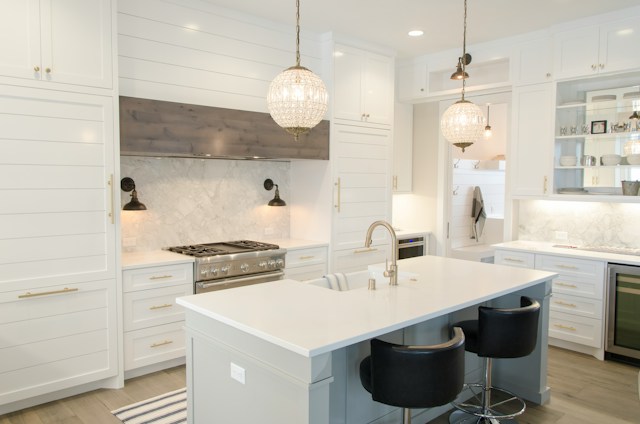Embarking on a kitchen renovation can be both exciting and daunting. It’s a chance to revitalise the heart of your home, tailor it to your culinary needs, and infuse it with your personal style. In the midst of planning your new kitchen, consider extending your vision to include a bespoke wet room, blending functionality with luxury to elevate your home’s design and utility.
From modernising your layout to choosing the perfect appliances, every decision counts towards creating your dream kitchen. This comprehensive guide aims to steer you through the process with handy tips and crucial considerations.
Step 1: Planning Your Space
Assessing Your Needs
- Consider your lifestyle: How do you use your kitchen? Do you entertain often or cook large meals? Your new kitchen should reflect your habits.
- Analyse existing layout: Look at the flow of your current kitchen. What works? What doesn’t? Use this to inform the design of your new space.
Design Considerations
- Efficient layout: The classic “work triangle” concept is a timeless guide to efficient kitchen layout, placing the sink, fridge, and cooktop in a triangular configuration for ease of movement.
- Storage solutions: From deep drawers to overhead cabinets, think about storage that combines accessibility with maximum space utilization.
- Lighting: Good lighting is critical. Consider layering with task lighting, ambient lighting, and accent lighting.
Step 2: Setting a Budget
Financial Planning
- Prioritise your funds to know where to splurge and where to save.
- Don’t forget to set aside a contingency budget for unexpected costs.
Step 3: Designing Your Kitchen
Style and Aesthetics
- Choose a style: Whether it’s contemporary, traditional, or country, the style should blend seamlessly with the rest of your house.
- Colour scheme: Select a colour palette that creates the desired atmosphere and complements the kitchen’s materials.
Selecting Materials - Countertops: Durability and maintenance are as important as appearance. Quartz, granite, and marble are popular choices.
- Cabinetry: Wood, laminate, and thermofoil are common options, each with different price points and characteristics.
Flooring: It should be durable and easy to clean. Tiles, hardwood, and vinyl are all capable choices.
Step 4: Choosing Appliances
Performance and Efficiency
- Refrigerator: Size and energy efficiency are paramount.
- Cooktop/Oven: Decide between gas, electric, or induction, based on your cooking preferences.
- Dishwasher: Look for models that offer economy settings and adequate capacity.
Step 5: Hiring Professionals
Finding the Right Help
- Designers: A professional designer can help you maximise the space’s potential.
- Contractors: Ensure they are licensed, insured, and come with good references.
Step 6: Managing The Project
Overseeing the Renovation
- Keep regular communication with your contractor.
- Be prepared for disruption and plan alternative arrangements for cooking and eating.
Step 7: Final Touches
Personalising Your Space
- Backsplash: It can be a place to add a pop of colour or interesting textures.
- Hardware: Knobs and pulls are the jewellery of your kitchen – choose styles that reflect your aesthetic.
Step 8: Enjoying Your New Kitchen!
After the dust has settled and the last appliance is installed, take a moment to enjoy your brand-new kitchen. It’s a space that should bring joy and functionality to your everyday life.
Congratulations on completing your kitchen renovation journey!
Remember, renovating a kitchen is a significant undertaking that requires careful planning and decision-making. Investing time into the early stages of planning will pay dividends in the long run, ensuring that your new kitchen is not only beautiful but also fits your lifestyle needs perfectly.

